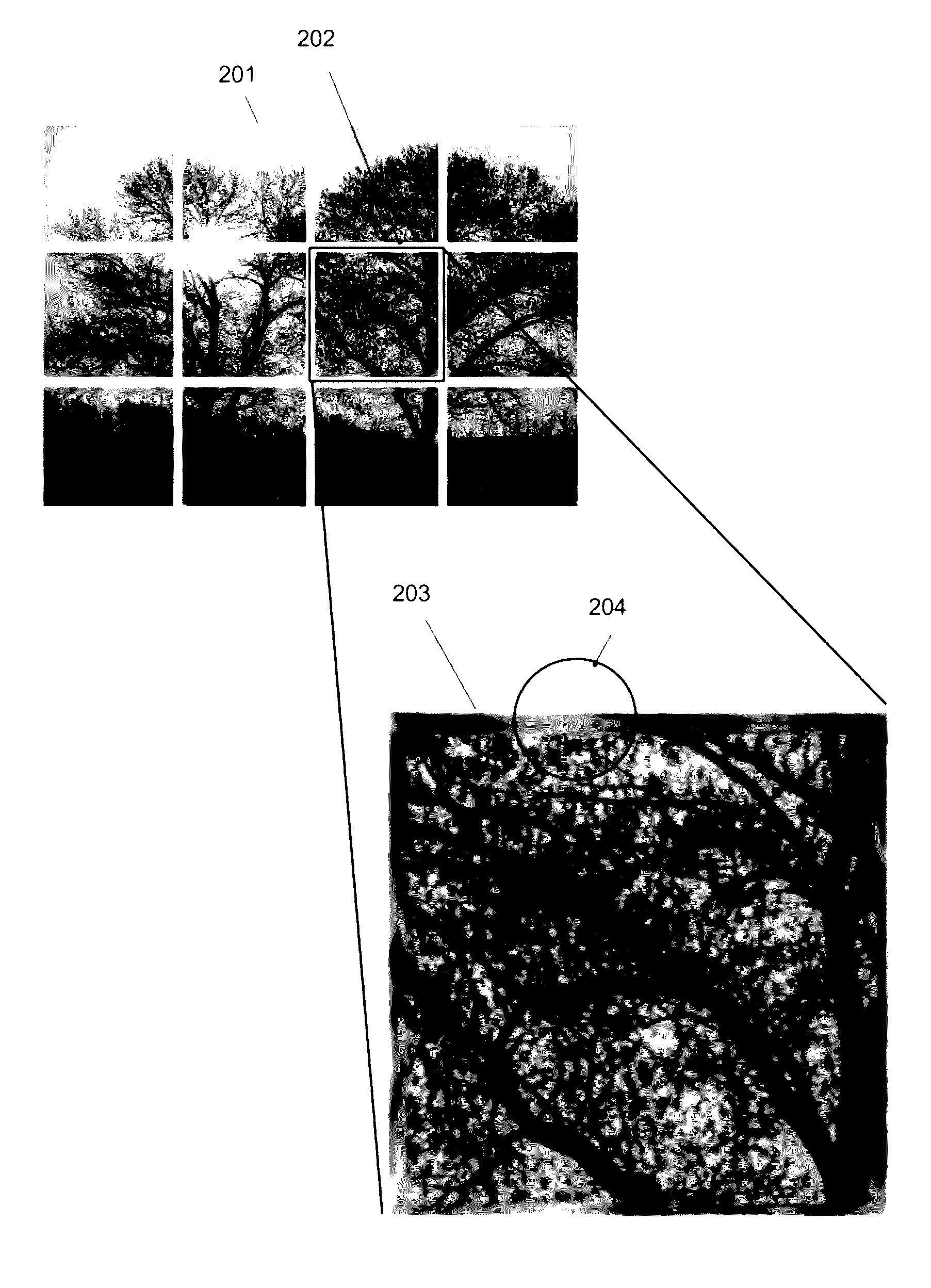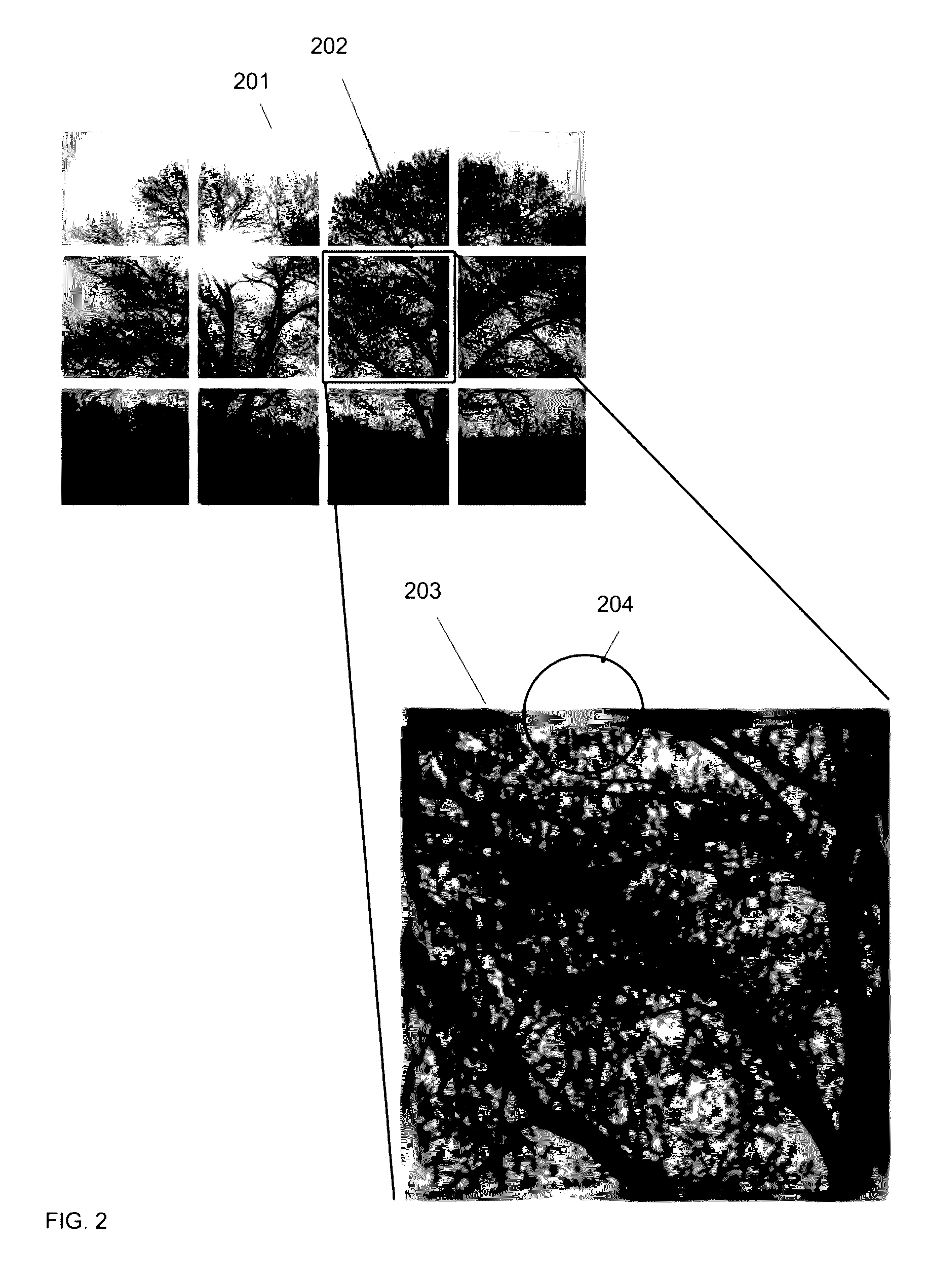Image based tile puzzle CAPTCHA system
- Summary
- Abstract
- Description
- Claims
- Application Information
AI Technical Summary
Benefits of technology
Problems solved by technology
Method used
Image
Examples
Embodiment Construction
[0018]This invention is realized as a two-component (client and server) system for producing image-based CAPTCHAs and evaluating user interactions with the resulting CAPTCHAs.
[0019]The server component of the system accepts images as its source input, produces radially symmetrical fragments of the images, transmits the resulting image fragments to the client component of the system, and receives information about user actions from the client component of the system.
[0020]The produced fragments are presented to the user by the client component of the system as an arrangement of radially symmetrical tiles within display confines of a logical positioning grid. FIG. 1 depicts a few exemplary methods for image segmentation and tile generation. The selected shapes of fragments themselves can vary widely between different segmentation approaches (which itself present an additional challenge to any possible algorithmic attempt to circumvent the system) as long as the fragment shape is based...
PUM
 Login to View More
Login to View More Abstract
Description
Claims
Application Information
 Login to View More
Login to View More - R&D
- Intellectual Property
- Life Sciences
- Materials
- Tech Scout
- Unparalleled Data Quality
- Higher Quality Content
- 60% Fewer Hallucinations
Browse by: Latest US Patents, China's latest patents, Technical Efficacy Thesaurus, Application Domain, Technology Topic, Popular Technical Reports.
© 2025 PatSnap. All rights reserved.Legal|Privacy policy|Modern Slavery Act Transparency Statement|Sitemap|About US| Contact US: help@patsnap.com



